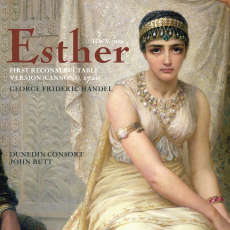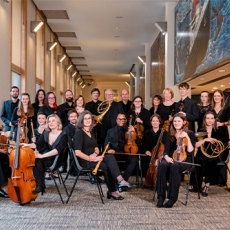Esther - Dunedin Consort - Music OMH
Although Handel had already written Oratorios in Italy, and the precise origins of Esther HWV50a remain unclear, the piece still enjoys the label of the first English Oratorio. At least two versions were written between 1718 and 1720, and at the Wigmore Hall the Dunedin Consort, directed by John Butt, performed the first reconstructible version of 1720, known as the Cannons after the Edgware establishment of the composer's patron, the Duke of Chandos.
Based upon the Old Testament book, with some elements coming from a Greek version in the Apocrypha, the story of Esther as told in the Oratorio feels rather flimsy. When the Persian King Assuerus' henchman declares a massacre on the Jews, Esther, whom Assuerus intends to be his queen, persuades him not to fulfil it. His mind, however, proves to be changed all too easily, since he is so besotted with her, and, it would seem, never actually declared the massacre in the first place!
The interest, however, lies in the way in which the story is told via a three act structure, with each act also bearing three scenes that take us through a series of emotions. For example, Act I sees the henchman Haman declare his evil intentions in the first scene, the Israelites celebrate Esther's impending marriage in the second, and then despair as they learn of the ensuing massacre in the third. Naturally, the music for each section matches the mood, but the Oratorio as a whole also witnesses great stylistic developments. As Butt argues, Act I possesses the type of ‘pastoral entertainment' that might be found in Acis & Galatea, Act II would seem reflective of the German Passion tradition, while Act III unleashes fully the large choral Oratorio, which was then to live on and on.
Butt's own intricate understanding of the piece contributed to the success of the evening. With him at the harpsichord, the orchestra (with obvious exceptions such as the cellos) stood for the entire evening and achieved the right level of attack and exuberance for the occasion, while producing a notably balanced and precise sound. The Oratorio also introduces certain instruments for individual arias, and such issues as wheeling a harp on and off the stage through the Wigmore's heavy doors, while the orchestra carried on playing, were stage managed effectively.
The instruments were often used in innovative ways so that the Israelite Boy's aria, ‘Praise the Lord with cheerful noise' saw running attacks on the harp that very few pieces permit. The aria ‘Tune your harps' was accompanied by pizzicato strings, while Act III's opening scene introduced two horns and the final chorus a trumpet.
Very occasional quibbles with volume levels and timing between soloists and orchestra aside, the vocal performances were very strong. As Haman, there was a surety and yet expansiveness to Matthew Brook's sound that gave a feeling of smoothness to his bass voice. With his superb tenor instrument and strong dramatic gestures, James Gilchrist captured every aspect of Assuerus' firmness and fairness as well as something of his besotted ‘loved up' disposition. As the Priest of the Israelites, Tim Mead brought his excellent countertenor voice to bear in a performance noteworthy for its combination of precision and feeling. To state it crudely, and speaking as a great fan of his Operas and Oratorios, you know that an evening of Handel is working when you see the soloist flipping the pages of their score back, indicating yet another repeat of the aria, and your heart rises rather than sinks!

